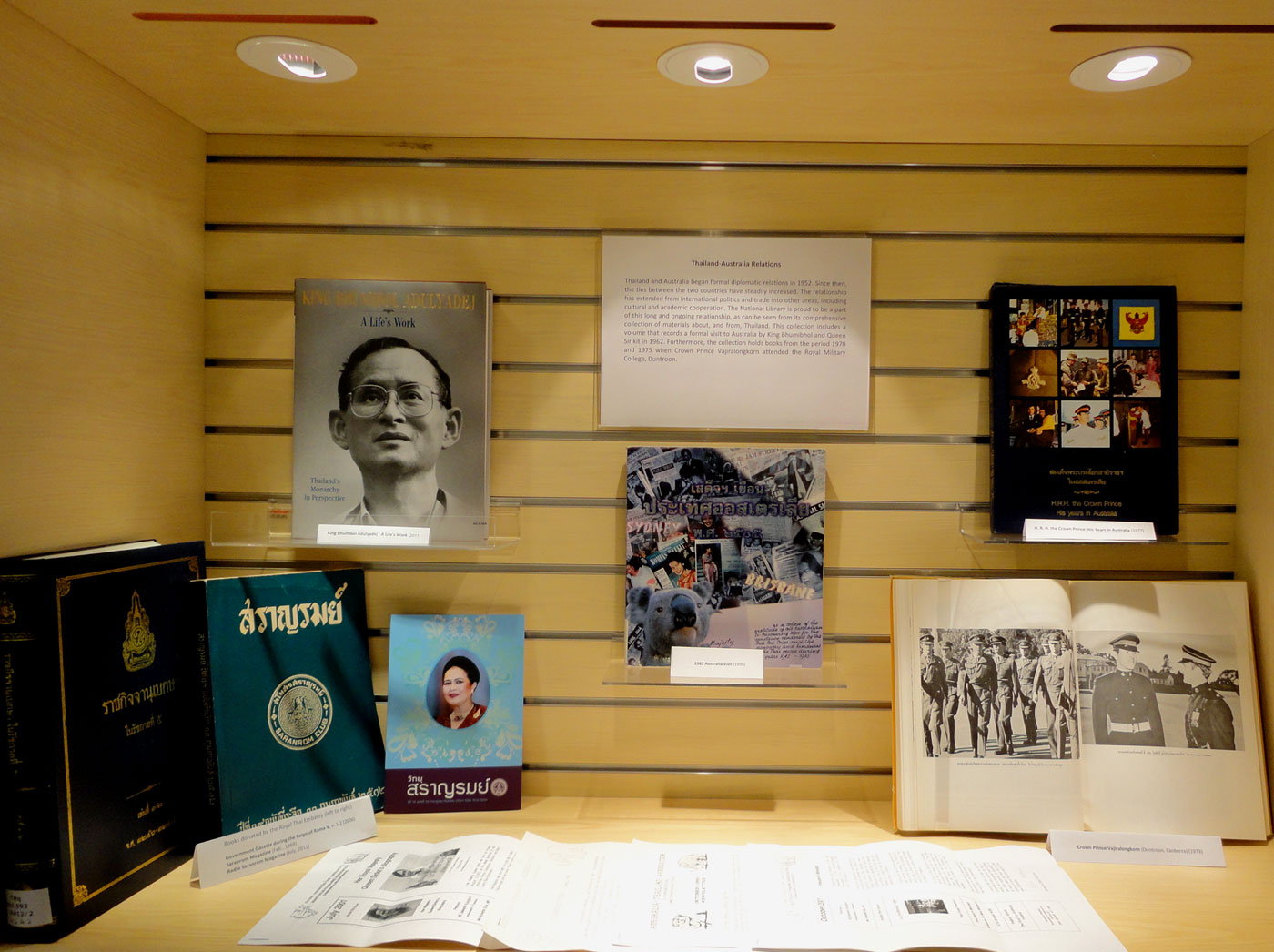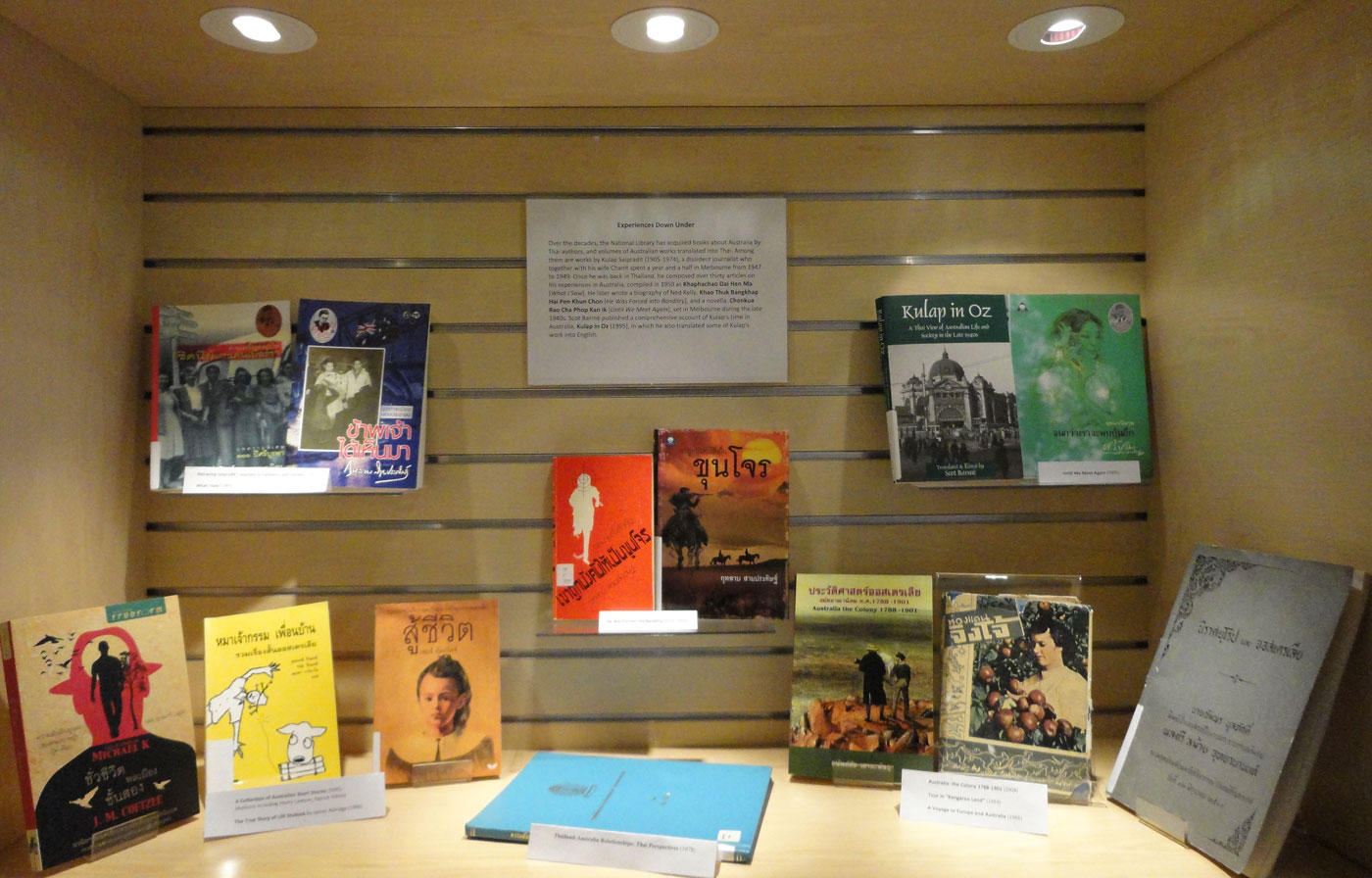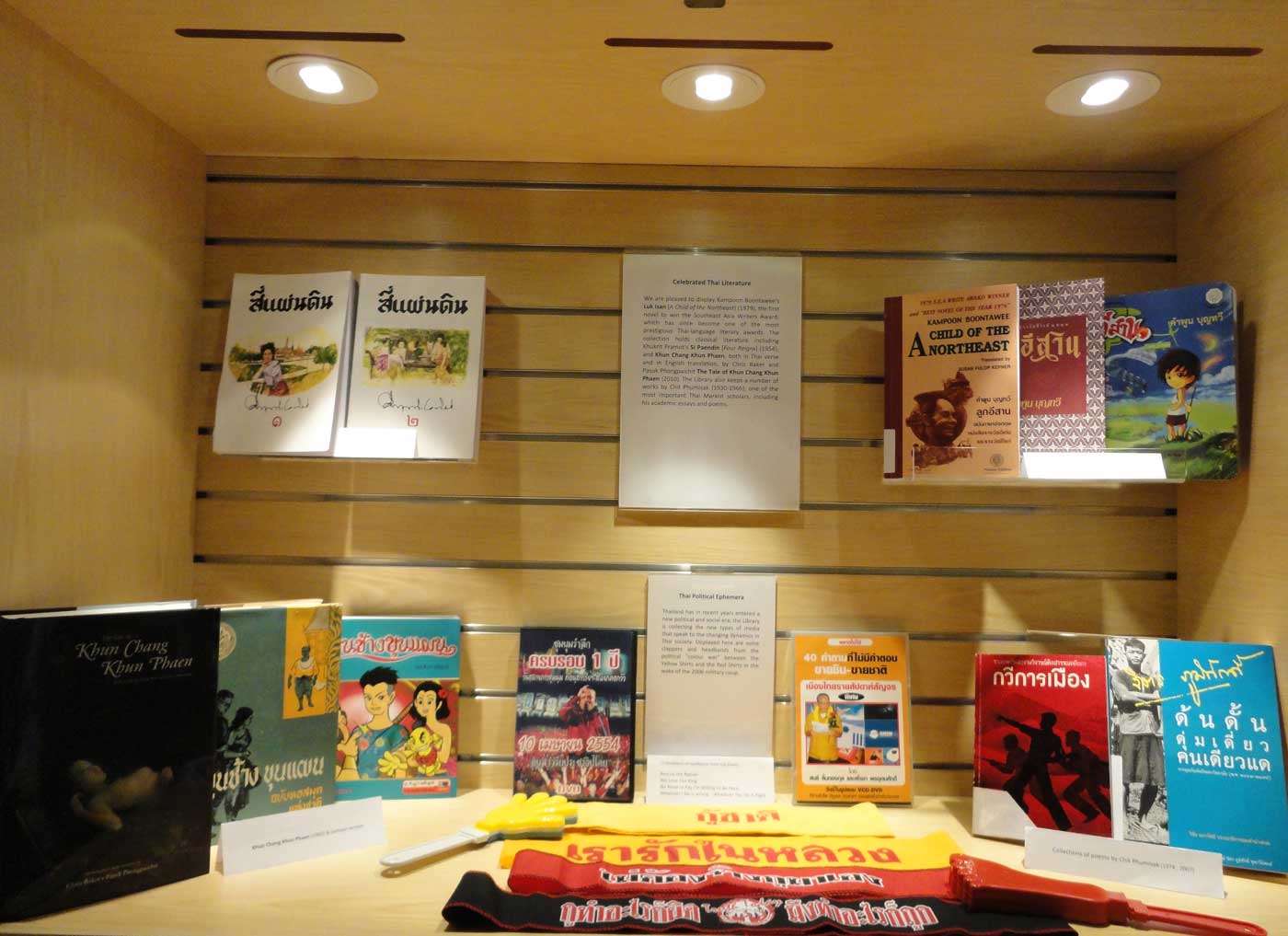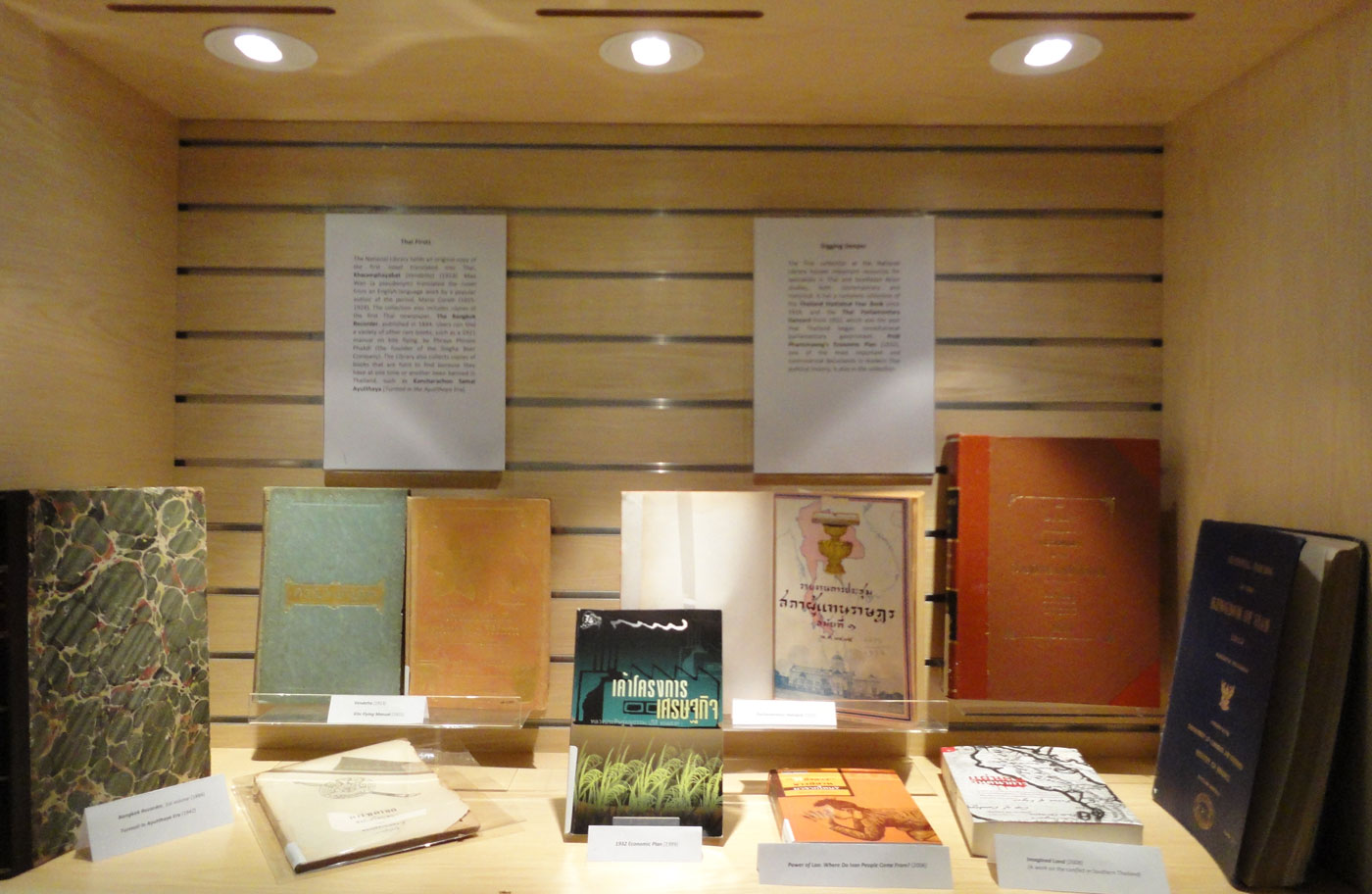We are pleased to announce to New Mandala readers a special exhibit at the National Library of Australia celebrating 60 years of Thailand-Australia relations. It is displayed in the Asian Collections Reading Room display cases.
Cabinet 1:

Thailand-Australia Relations
Thailand and Australia began formal diplomatic relations in 1952. Since then, the ties between the two countries have steadily increased. The relationship has extended from international politics and trade into other areas, including cultural and academic cooperation. The National Library is proud to be a part of this long and ongoing relationship, as can be seen from its comprehensive collection of materials about and from Thailand. The Thai collection holds a volume that records a formal visit to Australia by King Bhumibhol and Queen Sirikit in 1962. Other works in the collection document the period 1970 to 1975 when Crown Prince Vajiralongkorn attended the Royal Military College, Duntroon.
Cabinet 2:

Experiences Down Under
Over the decades, the National Library has acquired a number of books about Australia by Thai authors, and translations of Australian works into Thai. Among them are works by Kulap Saipradit (1905-1974), a dissident journalist who together with his wife Chanit spent a year and a half in Melbourne from 1947 to 1949. Once Kulap was back in Thailand, he composed over thirty articles on his experiences in Australia, compiled in 1950 as Khaphachao Dai Hen Ma [What I Saw]. He later wrote a biography of Ned Kelly, Khao Thuk Bangkhap Hai Pen Khun Chon [He Was Forced into Banditry], and a novella, Chonkua Rao Cha Phop Kan Ik [Until We Meet Again], set in Melbourne during the late 1940s. The Australian scholar Scot Barmé published a comprehensive account of Kulap’s time in Australia, Kulap in Oz (1995), in which he also translated some of Kulap’s work into English.
The National Library holds a first edition of the first novel translated into Thai, Marie Corelli’s Vendetta!; or, The Story of One Forgotten (1886). This popular novel of the Victorian era was translated into Thai as Khwamphayabat (1913) by Mae Wan (a pseudonym). In her time, Marie Corelli (1855-1924) was widely read. The collection includes copies of the first Thai newspaper, the Bangkok Recorder, published in 1844. Users can find a variety of rare books, such as a 1921 manual on kite flying, by Phraya Phirom Phakdi (the founder of the Singha Beer Company). The Library also collects copies of books that are hard to find because they have at one time or another been banned in Thailand, such as Kancharachon samai Ayutthaya (1951) [Turmoil in the Ayutthaya Era].
Digging Deeper
The Thai collection at the National Library houses important resources for specialists in Thai and Southeast Asian studies, both contemporary and historical. It has a complete collection of the Thailand Statistical Year Book since 1919, and the Thai Parliamentary Hansard from 1932, which was the year that Thailand began constitutional parliamentary government. Pridi Phanomyong’s Economic Plan (1932), one of the most important and controversial documents in modern Thai political history, is also in the collection.
Cabinet 4:

Celebrated Thai Literature
We are also pleased to display Kampoon Boontawee’s Luk Isan [A Child of the Northeast] (1979), the first novel to win the Southeast Asia Writers Award, which has since become one of the most prestigious Thai-language literary awards. The collection also holds classical literature including Khukrit Pramot’s Si Phaendin [Four Reigns] (1954); and Khun Chang Khun Phaen, both in Thai verse and in an English translation, by Chris Baker and Pasuk Phongpaichit (The Tale of Khun Chang Khun Phaen (2010). The Library also has works by Chit Phumisak (1930-1966), one of the most important Thai scholars, including his academic essays and poems.
Thai Political Ephemera
Thailand has in recent years has entered a new political and social era. The Library is collecting the new types of media that speak to the changing dynamics in Thai society. On display here are some of the campaign objects such as clappers and headbands from the political “colour war” between the Yellow Shirts and the Red Shirts in the wake of the 2006 military coup.
 Facebook
Facebook  Twitter
Twitter  Soundcloud
Soundcloud  Youtube
Youtube  Rss
Rss 
